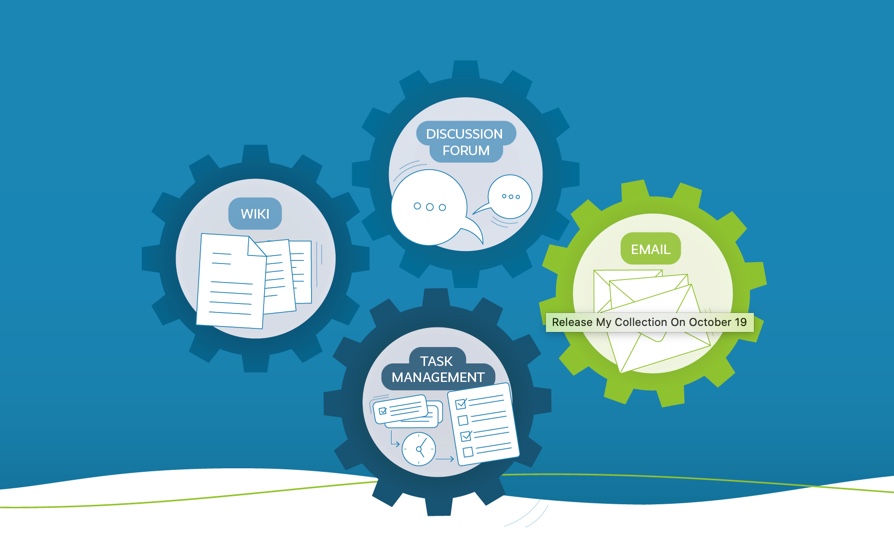
Introduction
Remote work is a growing trend that has become a permanent reality for many due to improvements in technology and global events. In May 2020, Twitter CEO Jack Dorsey announced that employees would be able to continue to work from home even after coronavirus restrictions were lifted. And many other companies — Facebook, Upwork, Shopify, Coinbase — are following suit by transitioning from an in-office work environment to one that is digital and geographically distributed.
There are two major reasons for this shift. The first is that remote work is good for business. Studies have shown that remote work increases employee productivity, improves retention rates, and reduces costs (avg. $10,000 on real estate expenses). The second is that people want to work from home. Therefore, companies that provide remote work options are able to attract better talent.
According to Global Workplace Analytics, 77% of people want to continue to work from home after the coronavirus pandemic is over, and 25 – 30% of people will be working remotely multiple days per week by the end of 2021. But whether or not remote work is the future of business has yet to be seen.
77% of people want to continue to work from home after the coronavirus pandemic is over, and 25 – 30% of people will be working remotely multiple days per week by the end of 2021.
Global Workplace Analytics
There are definite challenges to working remotely. The biggest challenge is the loss of human connection. Are people able to work away from their peers for a prolonged period of time and still remain healthy and productive? We don’t know.
As we run a global experiment on whether or not remote work can become the new norm, the focus sharpens on how to improve processes to increase the productivity and efficiency of remote, distributed teams. And effective communication is at the forefront of these discussions.
The ability to communicate effectively makes or breaks the success of a team. Every business must have a strong communication infrastructure in place to grow and prosper. But the communication needs of a geographically distributed, digitally connected team are very different from that of a team in an in-office work environment.
This is why we created this guide with practical knowledge and wisdom on digital communication for remote teams based on our own experience as an internationally distributed, remote working team of 50+ employees.
Who is this guide for?
This guide is for organizations and team members who are or are planning to work remotely as a distributed team. It is a complete guide to digital communication for remote teams divided into two parts: asynchronous communication and synchronous communication. The first part which you are about to read focuses on asynchronous communication — what it is, its benefits and challenges, and how to best implement it in your team for positive results.
After reading this guide, you will have a clear and practical understanding of communication best practices for remote teams to better navigate the wonders and pitfalls of working remotely as a distributed team.

Part I: Your Guide to Asynchronous Communication in Remote Work
What is asynchronous communication?
Asynchronous communication is communication that does not happen in real time. It is email, or notes posted to an online bulletin. This is different from synchronous communication, or communication that does happen in real time like a face-to-face meeting, company meeting on Zoom, or an active chat room.
In other words, asynchronous communication happens when you send a message with no expectations for an immediate response. Synchronous communication happens when you send a message and the recipient processes the information and provides an immediate response.
There is a time and a place for everything, including synchronous and asynchronous communication while working remotely.
Common examples of asynchronous communication include:
- Email – You send an email but may not get a response until hours or days later.
- Wiki – You create articles in a wiki which are accessed by others at a later date.
- Discussion Forums – You write posts and / or comments in a discussion forum that others respond to on their own time.
- Task Management Systems – You create action items with details provided on what needs to be accomplished, which team members may discuss with you if desired.
- Chat – This can be synchronous or asynchronous depending on company culture, but you may leave messages in a chat room with no expectations for an immediate response.
Why is asynchronous communication important for remote teams?
There is a time and a place for everything, including synchronous and asynchronous communication while working remotely. The truth is – the best remote working teams implement a balanced combination of synchronous and asynchronous communication. This is because what doesn’t need to be synchronous is better accomplished asynchronously.
When used correctly and at the right ratios, asynchronous communication’s benefits include:
Benefits of Time Flexibility
Being flexible about when responses are expected of others is essential for a geographically distributed team (people working in different time zones). Not only that, having more control over work hours results in happier and more productive people. Asynchronous communication allows employees to structure workdays to fit their lifestyles and responsibilities.
Higher Quality Communication
Because it is slower, asynchronous communication provides the time and space necessary to think through and provide high quality responses. For example, more time and thought are put into writing an email consisting of a couple of paragraphs than a one-line chat message.
Amazon CEO Jeff Bezos takes this one step further in his staff meetings, in which he combines both asynchronous and synchronous communication. No PowerPoints are used in Amazon meetings. Instead, people must prepare multi-page, narratively structured memos which go through a thorough revision process with co-workers before the actual meeting. Then, the first part of the meeting is spent in silence reading through each memo. Only after this asynchronous communication process is complete does the synchronous part of the meeting begin.
Encouragement of Diversity
Some people are better at synchronous communication while others are better at asynchronous communication. And a team composed of people of people with varying skill sets is better than a team where everyone only knows how to do the same thing.
The best remote working teams implement a balanced combination of synchronous and asynchronous communication.

How to Best Implement Asynchronous Communication in a Remote Team
Now that we’ve established what asynchronous communication is and why it is important, it’s time to talk about how to best implement it in your team. The next part of this section consists of best practices in using asynchronous communication in the remote workplace.
Group Communication by Context
In a face-to-face meeting, it’s easy to ask a question and get an immediate answer if you are confused or need more information to move forward with work. With async communication, that is not the case. That is why context and organization of information is even more important than usual. Properly organizing your async communications reduces confusion, increases productivity and efficiency, and creates a clear record of information.
The other benefit of organizing communication by context is that if you bring a new person into the company or project, it will be easy for them to read through the necessary materials and get caught up with less hand-holding. This makes work easier for everyone involved.
So how do you maximize organization of your team’s async communication? There are three main action steps to take.
First, make sure everyone is on the same page in terms of what app to use for which tasks. People need to know where things go. Team members should be clear on where to post status reports, task items, brainstorm sessions, work drafts etc.
Make sure everyone is one the same page in terms of what app to use for which tasks, and take, organize, and store information in a way that newcomers are able to easily access the information.
Second, make sure you take, organize, and store information in a way that newcomers are able to easily access the information and get a clear understanding of what’s going on in a single day. This means choosing the right modes of async communication for your team and the right technology to implement those modes.
Third, pay attention to the public vs. private message ratio of your chat groups. This applies whether chat is sync or async for you (as mentioned before, this depends on company culture). But finding a good balance here is important. Too much private, 1-1 messaging can be a sign of cliques, which are roadblocks to productivity. Too much public, large group messaging can be distracting and prevent the completion of deep work.
Pay attention to the public vs. private message ratio of your chat groups.
Decide on Your Asynchronous Communication Modes
First, consider the modes of communication you want to use. The basic async communication modes you want to consider for your team are as follows:
- Wiki – A place to make and keep notes containing everything from full article drafts to async brainstorming sessions.
- Task Management – A good tool for communicating async status updates, action assignments, and even in-progress notes.
- Discussion Forum – A great place for teams to post status updates and share long-form ideas.
- Email – Everyone has it; everyone uses it. So, we’re not going to say much about this one or even recommend apps for it. Whatever you’re already using probably works just fine.
Use the Right Technology
Having the right technology infrastructure in place is essential for success as a remote, distributed team.
If you think about it, since there is no physical office — the technology is the office. Your computer becomes your cubicle, your chat app becomes the hallway taking you to your team members’ desks to talk, your video conferencing app becomes the conference room.
So, a remote team having the right technology in place is as important as an in-office team having a functional, comfortable office to work in.
So how do you choose the right technology for you?
After you’ve decided on the modes, you can choose your apps accordingly. There are a lot of apps out there. Here are a few of our favorites for asynchronous communication:
- AirSend – AirSend is an all-in-one app that allows you to send messages, share and organize files, complete tasks, have video or screen sharing calls, and keep notes in a built-in wiki. The wiki and task management sections provide everything you need for asynchronous communication. While the messaging and conferencing capabilities fulfill your team’s synchronous communication needs. We use AirSend for almost all of our team’s communication, sync and async.
- Trello – Trello is a task management tool that is great for assigning and keeping track of tasks. Inspired by Kanban, Trello allows you to create unlimited boards, lists, and cards so that you can sort and customize your to-do lists any way you want. The app can be used to provide asynchronous status updates and to organize discussions during synchronous meetings.
- Discourse – Discourse is an app that lets you create your own online discussion forum. Discussion forums are great because they allow you to write long-form content and organize that content by topic.
This brings us to our other option for remote communication which you can read about in Part II of our Complete Guide to Digital Communication for Remote Teams.